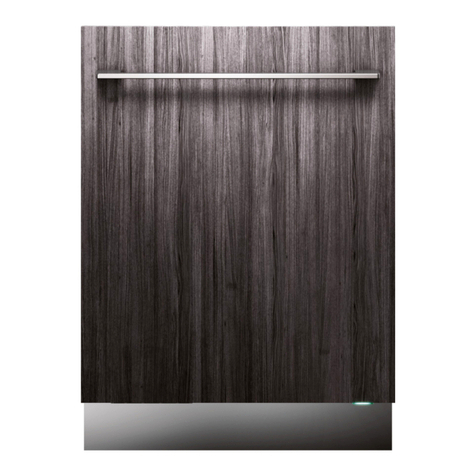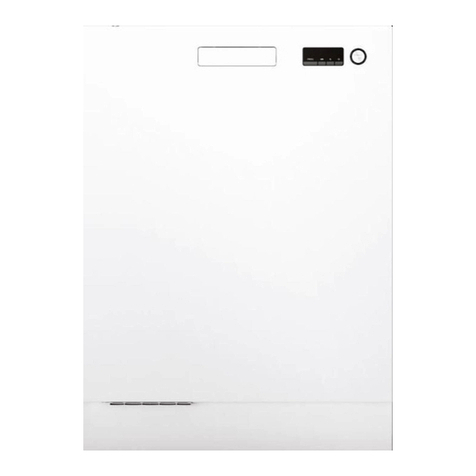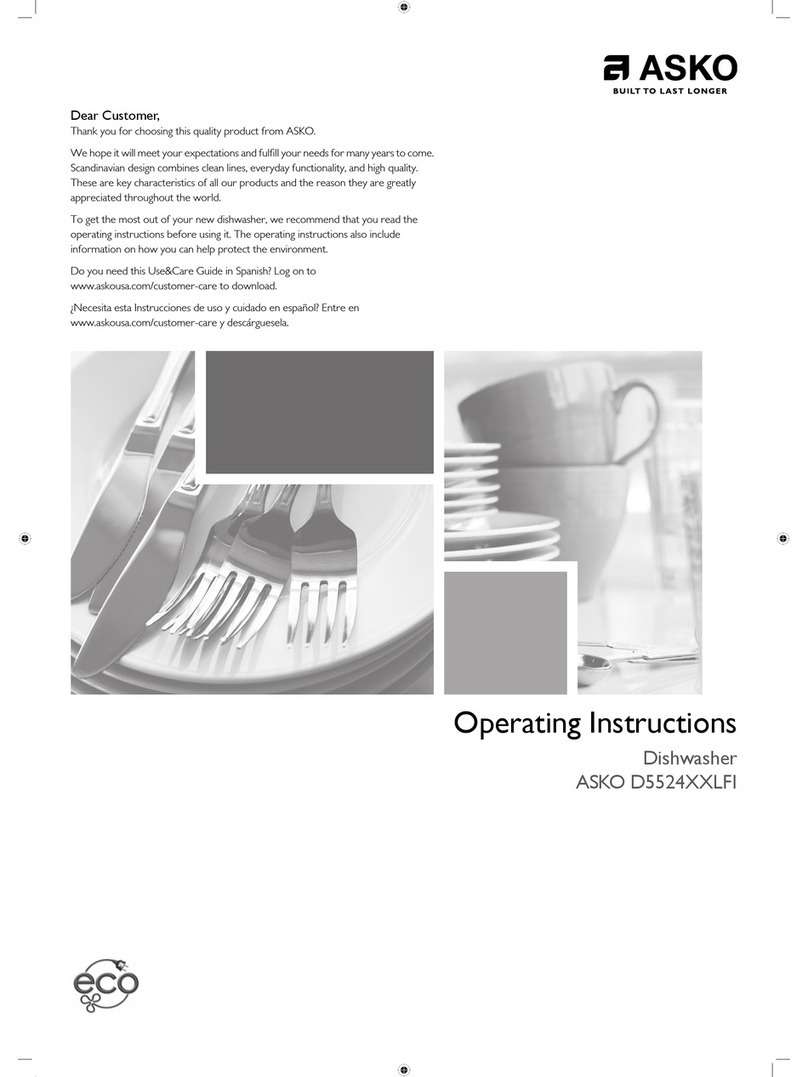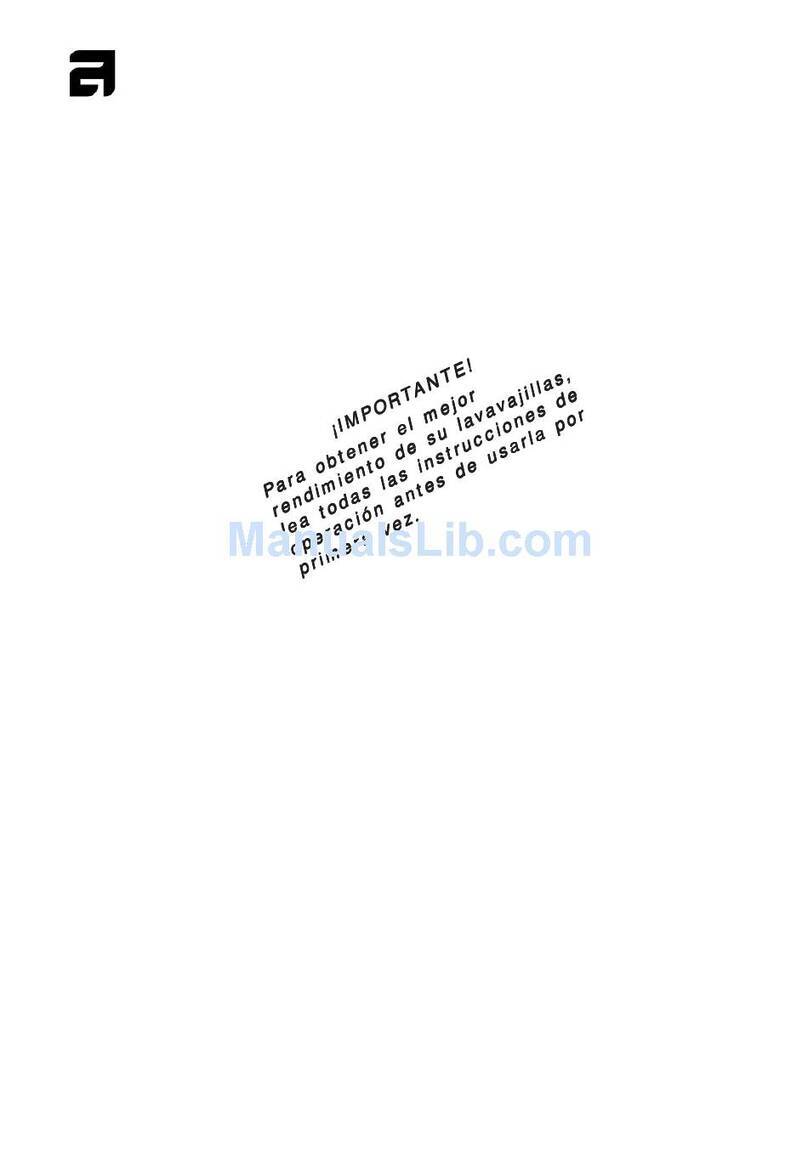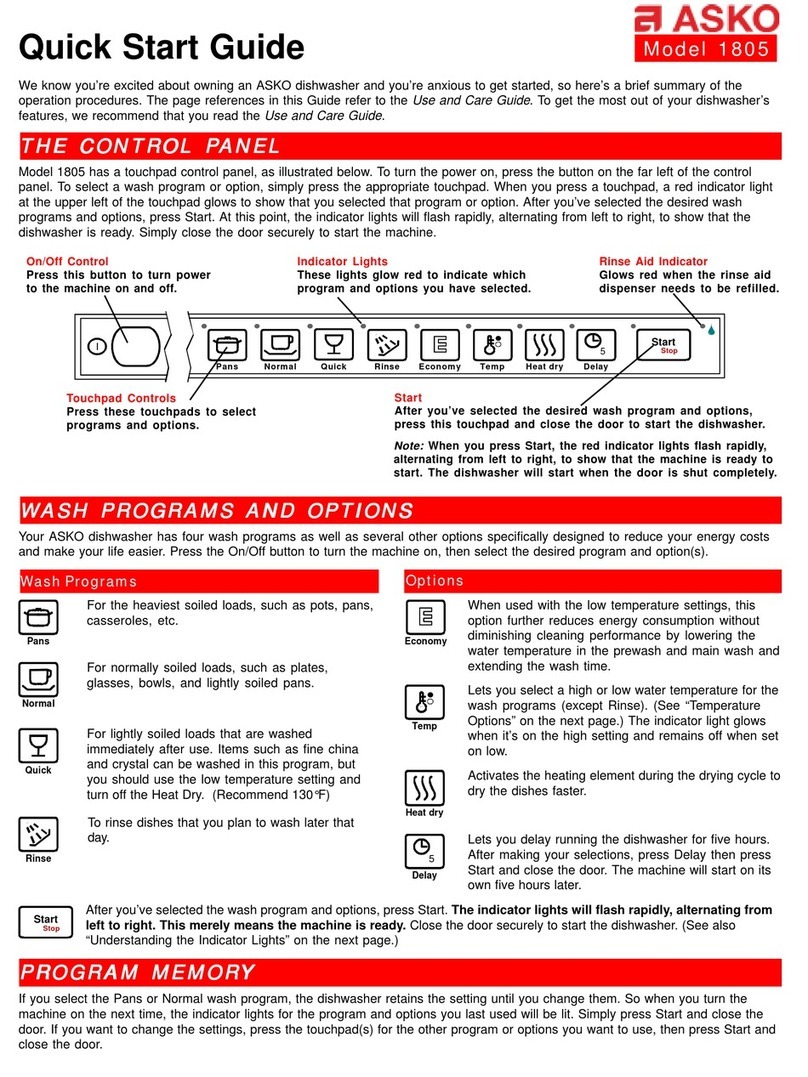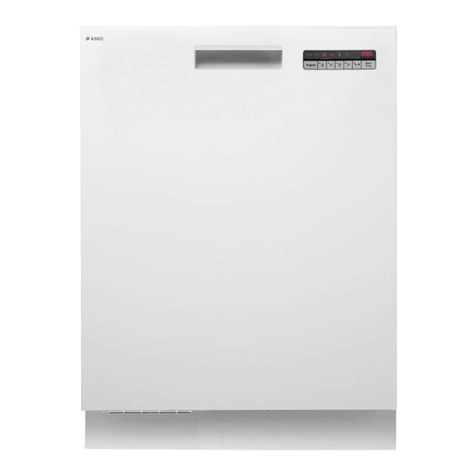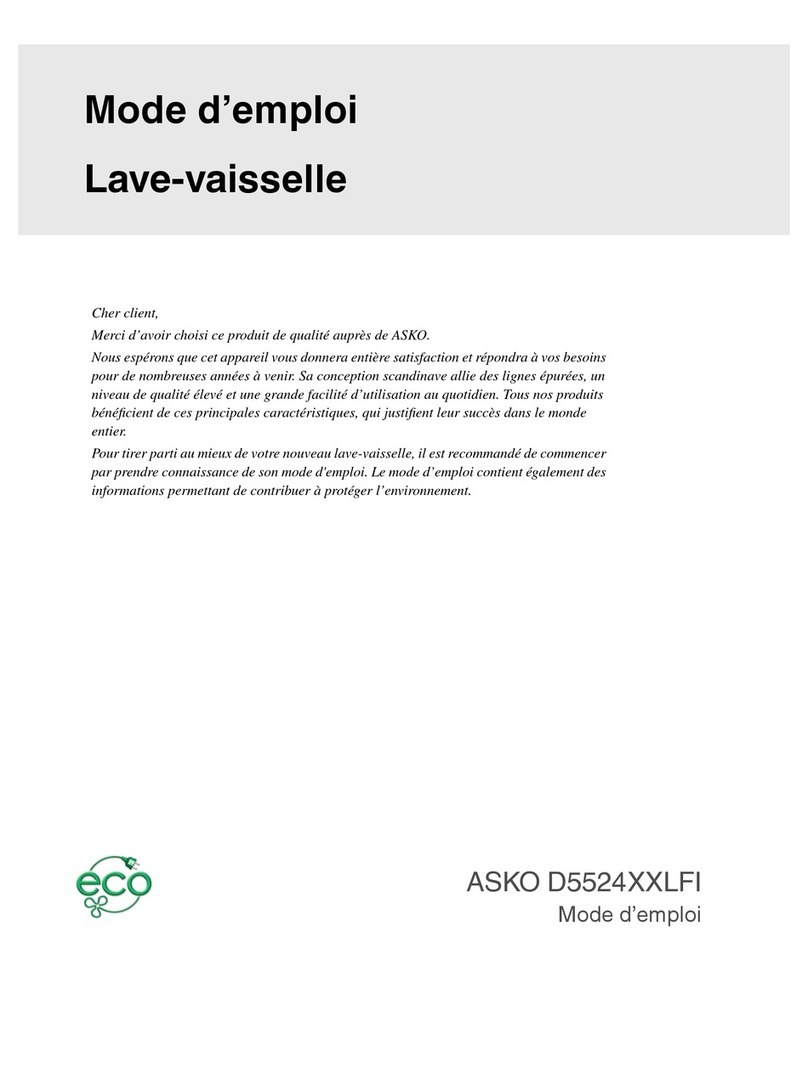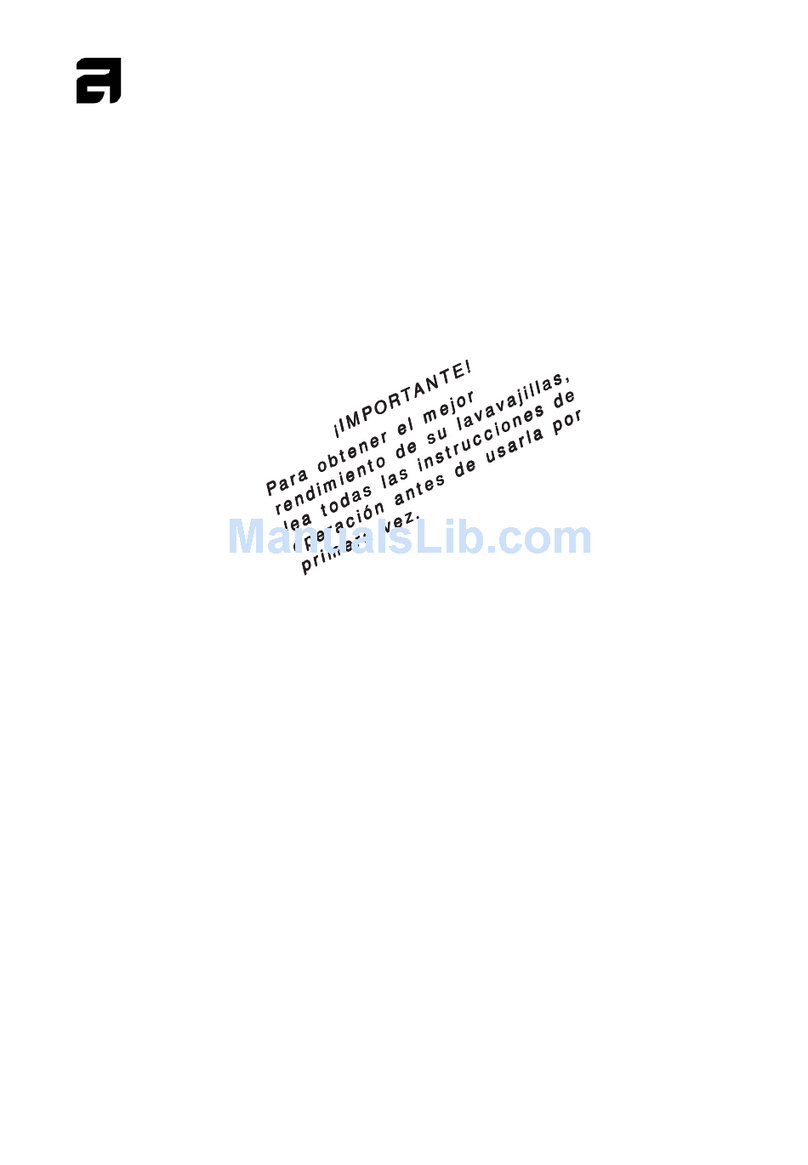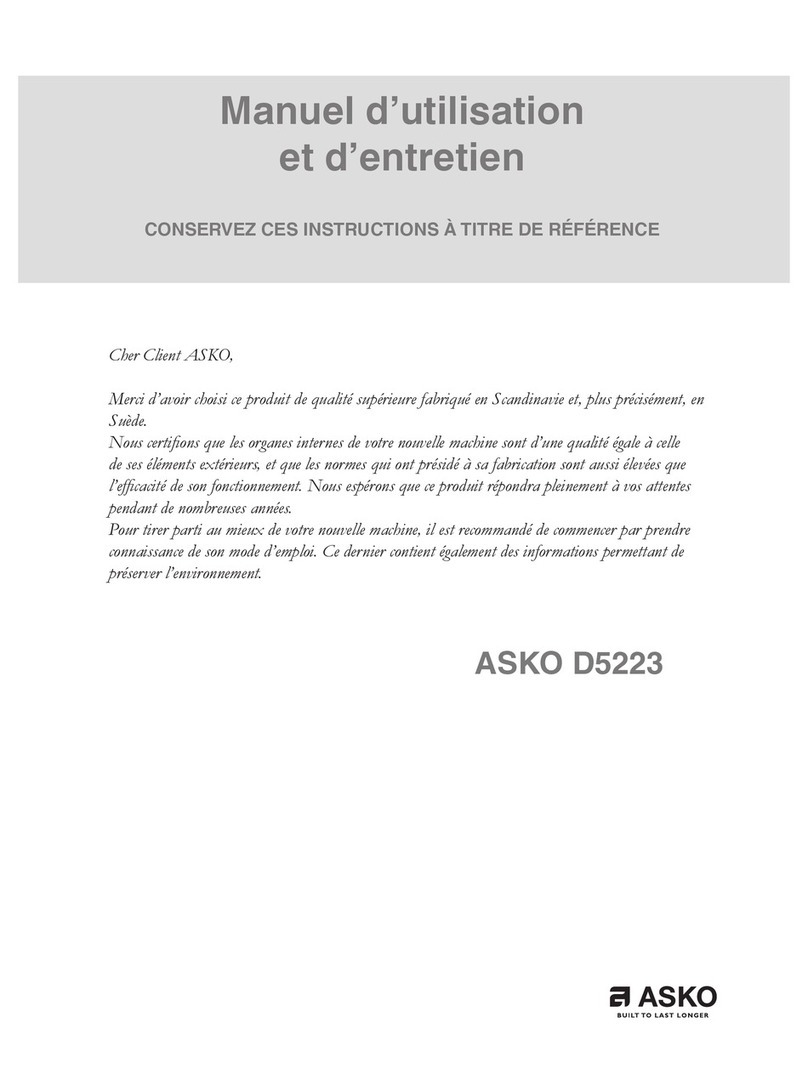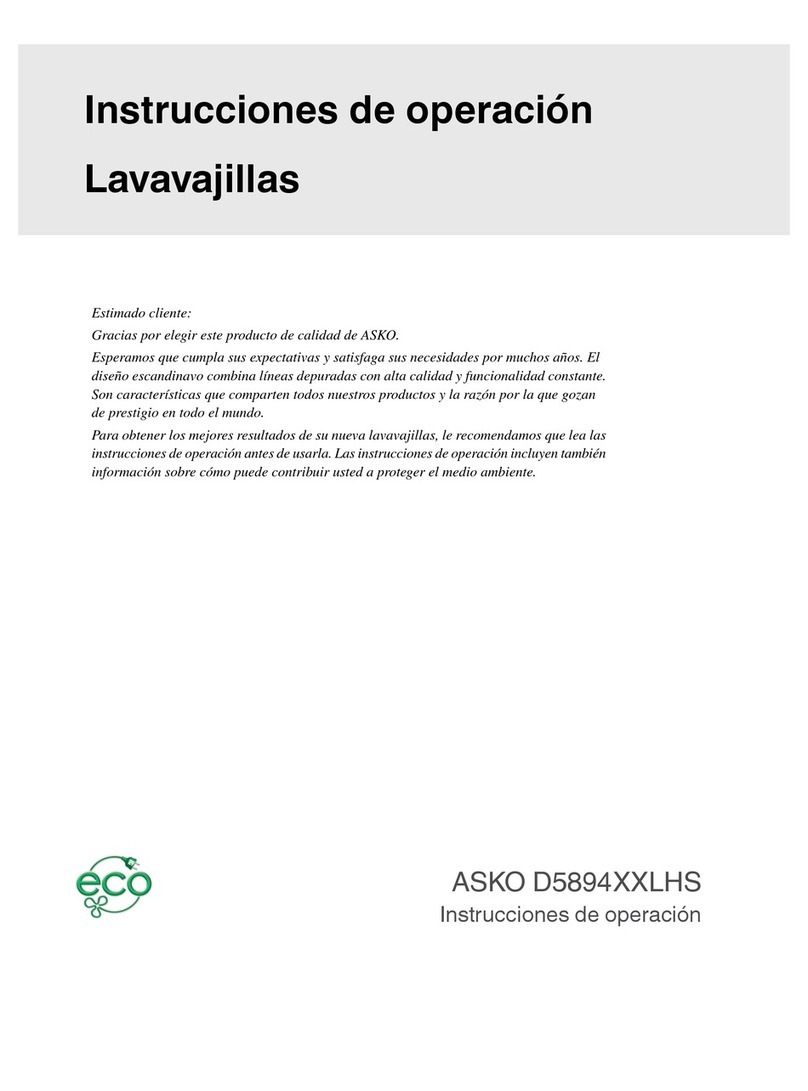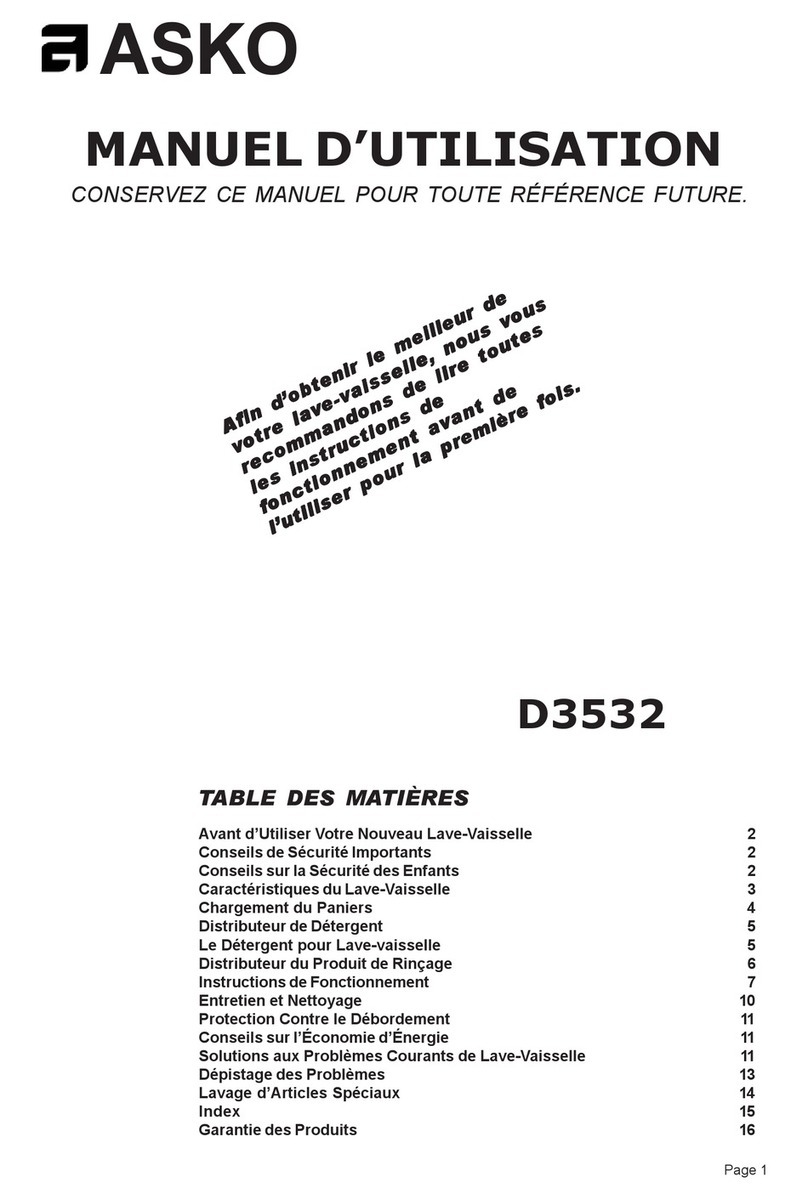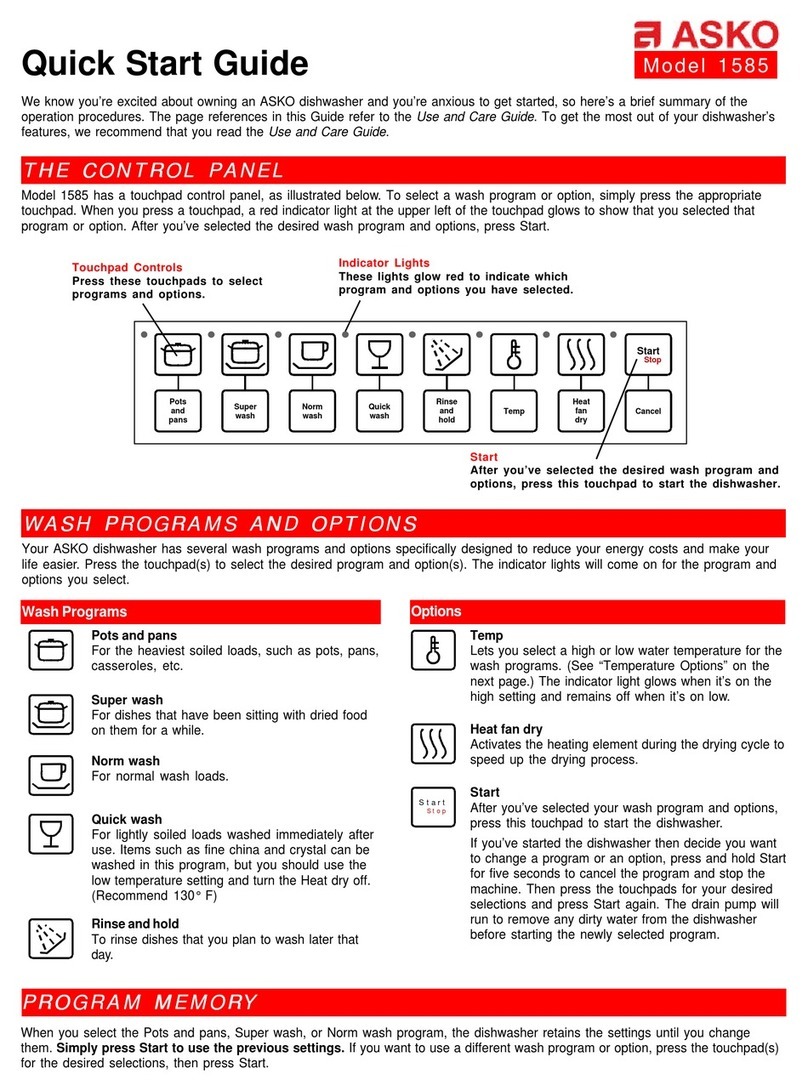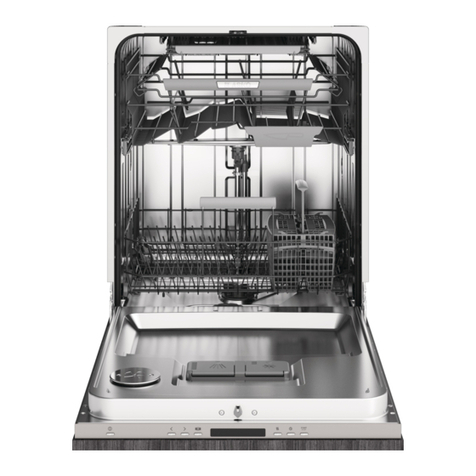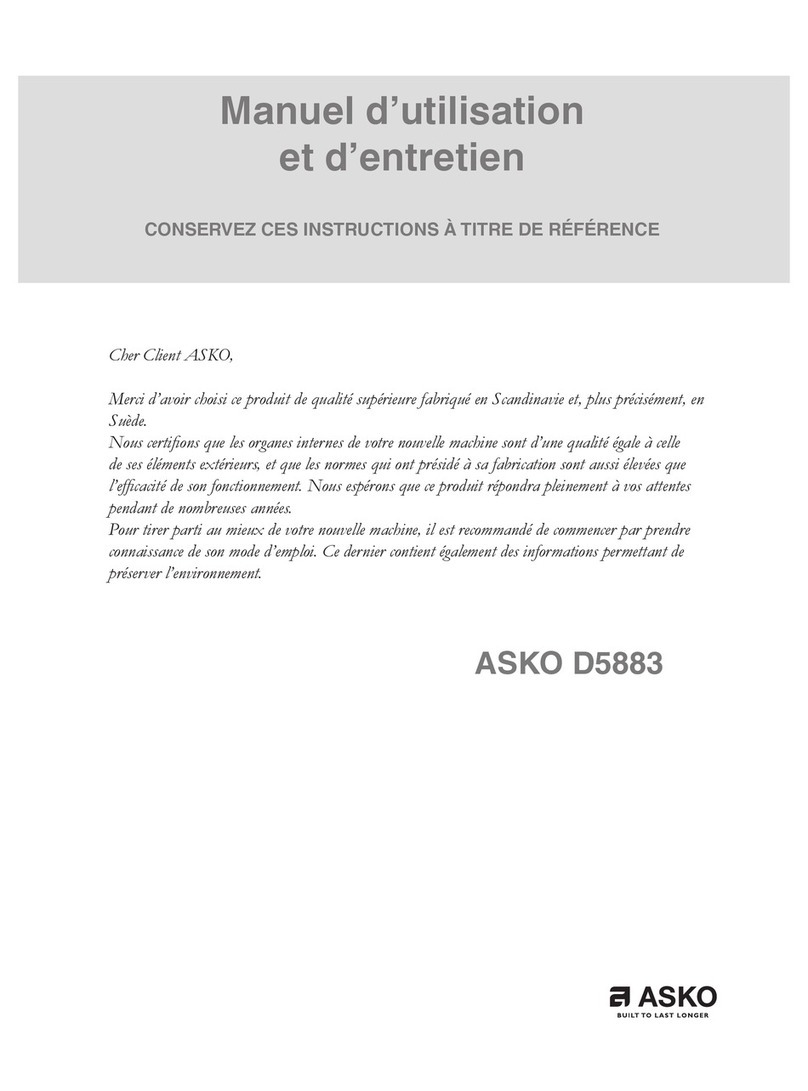
4
PULL-LATCH (FULLY INTEGRATED MACHINES ONLY)
The machine will stop if the door is opened
during operation. However, since the machine
is fitted with a pull-latch, splashing may occur
if the door is opened too quickly. Therefore,
unlatch the door carefully and wait until the
spray arms have stopped rotating before ope-
ning fully.
OVERFILL PROTECTION
The overfill protection starts the drain pump
and switches off the water inlet if water rises
above the normal level. If the overfill protec-
tion becomes activated, turn off the water supply
and call for service.
CLEANING
Use only a damp cloth to clean the edge around
the door. Do not use a spray. Water can enter
the lock and come into contact with the elec-
tric components.
WRAPPINGS
Sort the wrapping material according to recom-
mendations by the local authorities.
DISPOSAL
When the machine is no longer useful and is to
be scrapped it should be made unusable. Dis-
connect and cut off the electric cable close to
the machine.
Get in touch with the refuse collection service
or your local authorities for advice on how to
scrap the machine in a proper manner.
The machine is made and marked for recycling.
GENERAL
• Study and save the operating instructions for
future reference.
• Services to the dishwasher, ie, water supply,
drain, electric power, should be connected by
an authorized person.
• Do not use the dishwasher for other purposes
than those stated in the operating instructions.
• Do not subject the dishwasher door or the
baskets to any other load in addition to the
dishware.
• Use only dishwasher detergent.
• Place cutlery and other sharp objects so that
they cannot cause injury, or damage to the app-
liance.
• Do not touch the heating element at the bot-
tom of the dishwasher - it is very hot during and
for a period following the dishwashing process.
Never place items containing remains of sol-
vents in the machine, ie, danger of explosion.
Dishware containing ashes, wax or lubricating
grease may not be washed in the machine.
Place objects made of wood or plastic in the
upper basket, ie, so that they do not fall down
onto the heating element at the bottom of the
machine (fire hazard).
INSTALLATION
See the enclosed instructions for installation.
TRANSPORT/WINTER STORAGE
Transport the machine in an upright position or
lying on its back. Drain off all water from the
drain pump and the inlet valve if the machine is
to be transported, or stored in unheated premi-
ses, in the winter - call your local dealer.
SAFETY


